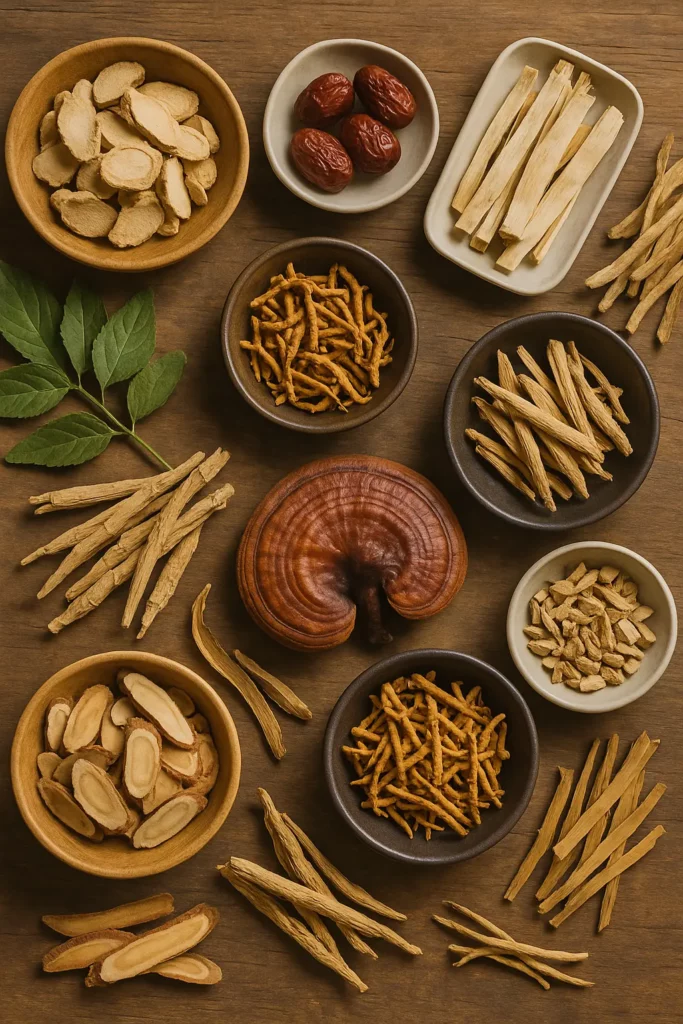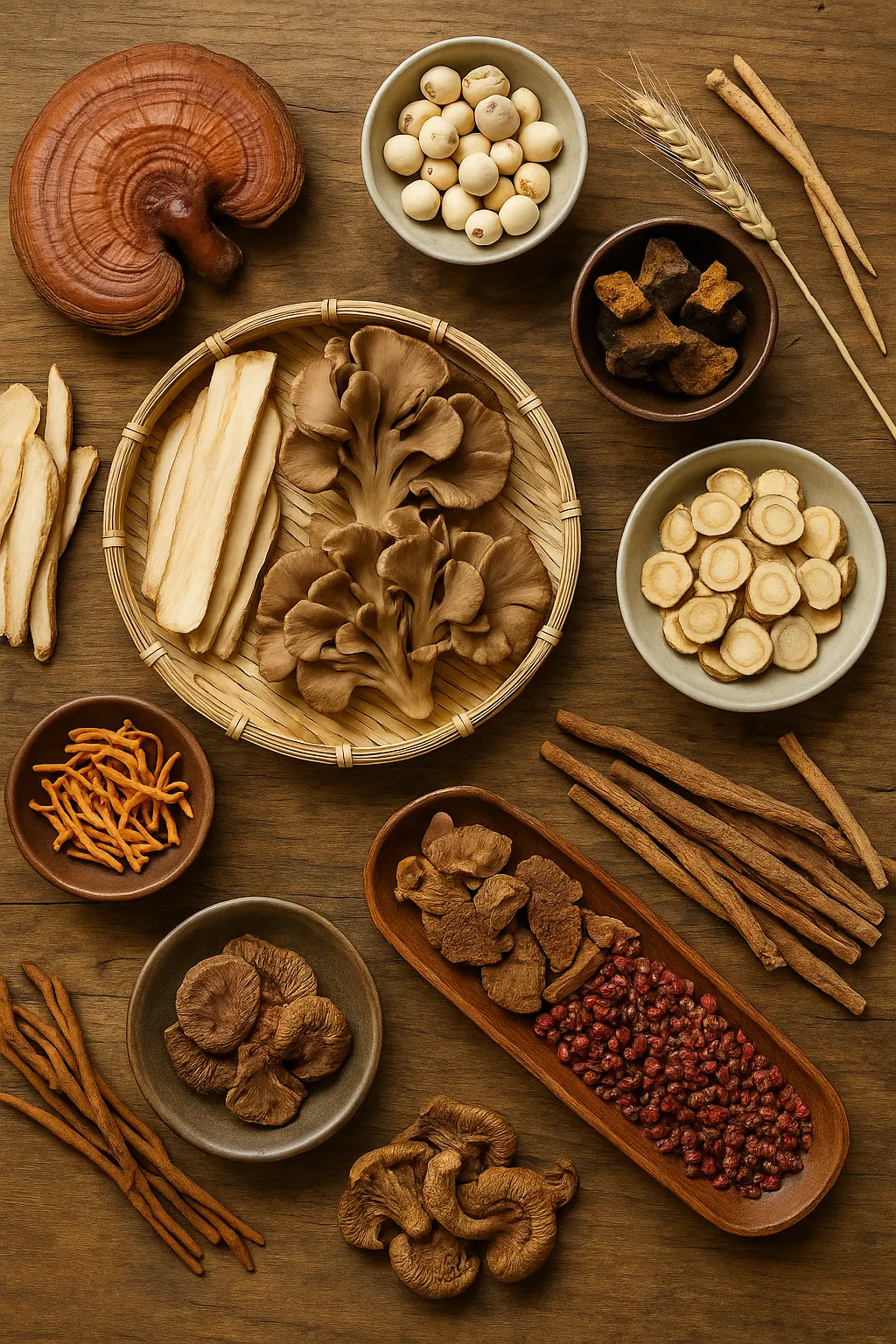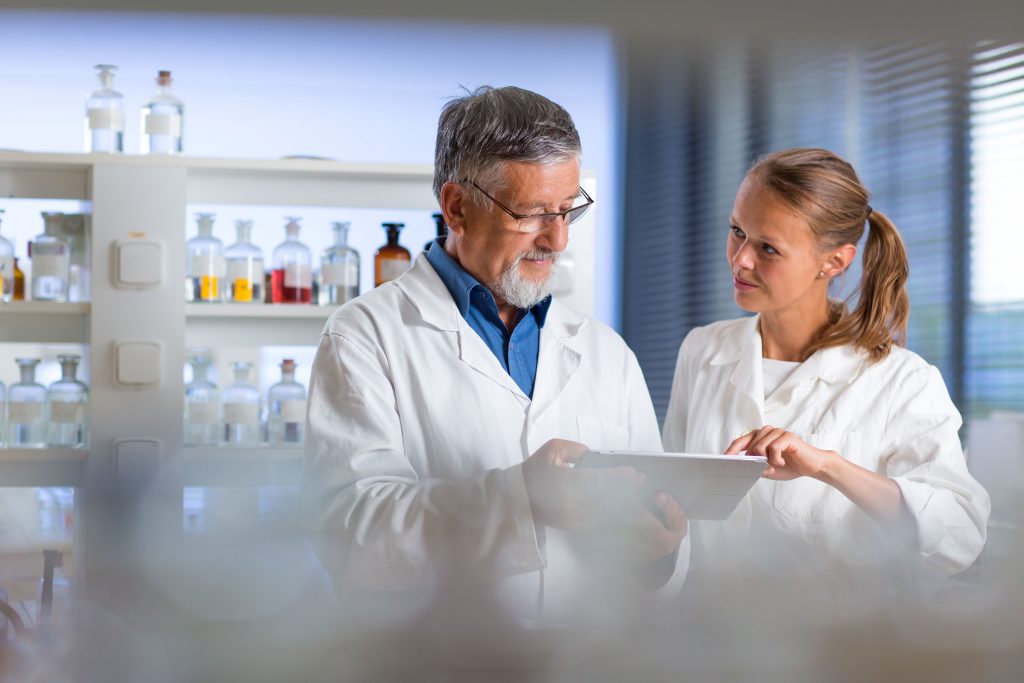

For more than 5,000 years, traditional Chinese medicine has developed a unique understanding of health as a balance between internal and external factors.
One of its main tools has been medicinal mushrooms – not just supplements, but regulators of energy, immunity and vitality (Qi).
Western science has only in recent decades begun to actively explore their potential, confirming efficacy that the East has practiced for centuries.

What are medicinal mushrooms?
Medicinal mushrooms are a special group of fungi that are not related to either plants or animals.
In TCM, they are considered modulators of life energy, or Qi. Each mushroom has its own specific profile of effects on the body’s energy systems.
In traditional practice, they are used to harmonize two key types of energy:
- Wei Qi – protective energy responsible for immune response, skin barrier function, and resistance to external influences.
- Ying Qi – Nourishing energy responsible for nourishing internal organs, repairing tissues and maintaining vitality.
The application of medicinal mushrooms in TCM encompasses:
- period of weakening of the body after illnesses;
- chronic fatigue syndrome;
- sleep disorders, anxiety, emotional exhaustion;
- frequent infections and weakened immunity;
- as a prophylactic during seasonal epidemics.
The most common representatives are: Reishi (Ganoderma lucidum), Cordyceps sinensis, Shiitake, Maitake, Hericium erinaceus.

Bioactive composition: what makes mushrooms a powerful therapeutic tool
The pharmacological activity of mushrooms is due to their rich biochemical profile:
- Beta-glucans: natural polysaccharides that activate cells of innate immunity – macrophages, NK cells, granulocytes. They improve non-specific defenses and regulate inflammatory responses.
- Hericenones and erinacines (in Hericium mushroom): promote neuronal growth through stimulation of nerve growth factor (NGF), which is important in neurodegenerative conditions.
- Terpenoids: exhibit hepatoprotective, anti-inflammatory and antioxidant effects. Particularly valuable in Reishi.
- Ergosterol: precursor of vitamin D, supports calcium metabolism, influences hormonal regulation.
- Micronutrients and amino acids: contribute to enzyme synthesis, support the antioxidant system (e.g. glutathione peroxidase).
These substances act synergistically, providing both symptomatic and preventive effects.

Processing technologies: preserving value without loss
Proper extraction is important to maximize the therapeutic effect from mushrooms:
- Hot water extra ction – extracts water-soluble polysaccharides (primarily β-glucans), which are the main immunostimulants.
- Alcohol extraction – allows to extract terpene compounds, phytosterols, fat-soluble components.
- Combined extraction – gives a full complex of active substances, approaching the effect of the whole mushroom.
After extraction, the products pass through:
- multi-stage filtration;
- Concentration and drying by the spray-dry method;
- microbiological control and testing for impurities: heavy metals, pesticides, mycotoxins, radioactivity.
This guarantees not only efficiency but also the safety of the final product.

How to take medicinal mushrooms correctly
To achieve a pronounced effect, it is important to follow a systematic approach. Depending on the indications and the condition of the body, doses may vary:
- Prophylactic dose: 1-2 capsules per day (to support immunity, general tone).
- Therapeutic dose: 3-10 capsules per day (for chronic conditions, rehabilitation after illness, exhaustion).
- Course: 8-12 weeks, according to the scheme 5/2 (five days of intake, two – rest).
✅ Critical recommendations:
- take on an empty stomach or 30 minutes before a meal;
- drink warm water or herbal tea;
- concomitantly consume a source of vitamin C (e.g. Acerola) to enhance bioavailability.
Synergy with phytotherapy
Combining mushrooms with phytotherapeutic agents is a traditional practice in TCM.
Mushrooms enhance the effect of adaptogens, hepatoprotectors, antioxidants. The most frequent synergistic combinations:
- Reishi + Astragalus – powerful immunoadaptogenic effect, cardioprotection, anxiety reduction.
- Cordyceps + Ginseng – to increase stamina, adaptation to stress, improve adrenal function.
- Hericium + Saffron or Bacopa – to improve cognitive function, support the nervous system, neuroprotection.
Such combinations are used as part of formulas (e.g., adaptogenic complexes) or as simultaneous administration of monopreparations.
📚 Zhang A. et al. Use of traditional Chinese herbs with mushrooms: synergistic principles. Chin J Integr Med, 2019.

Common questions about medicinal mushrooms
Can different medicinal mushrooms be combined?
Yes, and even desirable. Combining different mushrooms enhances their synergistic effects, especially in cases of immune deficiency, stress, asthenic conditions or chronic fatigue.
Can medicinal mushrooms be overdosed?
No, this is unlikely. However, it is worth sticking to the recommended dosage. Excessive use will not increase effectiveness, but may cause slight discomfort in the digestive tract.
What should I do if my child can’t swallow a capsule?
The capsule can be opened and the contents dissolved in water, juice, or food (e.g., yogurt, applesauce).
Are there contraindications to taking mushrooms along with medications or supplements?
No serious interactions have been recorded. However, it is recommended to adhere to the principle of “empty stomach” – take mushrooms separately from other remedies. Caution is needed when taking blood thinners (e.g. warfarin and Auricularia mushroom).
What is “double extraction” and why is it important?
It is a process combining hot water and alcohol extraction of active substances. It extracts both polysaccharides (water-soluble) and terpenoids (fat-soluble) from mushrooms, providing a full spectrum of action.
Why are extracts stronger than mushroom powder?
Extracts contain up to 30-50% polysaccharides, while powder contains only 0.5-3%. Due to the concentration of bioactive substances, extracts can be 10-30 times more effective than powder.
Are the extracts tested for safety?
Yes. All batches of mushrooms undergo multi-level testing in laboratories in the USA, Ireland, Germany and the Czech Republic. More than 300 harmful substances are tested, in particular heavy metals, pesticides, mycotoxins and radioactivity.
Do medicinal mushrooms have side effects?
No serious side effects have been recorded. In rare cases, mild digestive disorders are possible at the beginning of intake (bloating, flatulence). They pass after a few days of adaptation.
Conclusions
Medicinal mushrooms – a powerful natural resource that combines the traditional medicine of the East with the achievements of modern pharmacology. They can be effectively used in the practice of a doctor for:
- immunomodulation;
- stress adaptation;
- support for chronic illnesses;
- rehabilitation after infections or chemotherapy.
With the growing need for safe, natural and multifunctional solutions – medicinal mushrooms are becoming not only part of tradition, but also an element of the future of evidence-based nutraceuticals.
List of references
-
Wasser, S. P. (2002). Medicinal mushrooms as a source of antitumor and immunomodulating polysaccharides. Applied Microbiology and Biotechnology, 60(3), 258–274. https://doi.org/10.1007/s00253-002-1076-7
-
Tuli, H. S., Sharma, A. K., Sandhu, S. S., & Kashyap, D. (2021). Medicinal mushrooms: A source of anti-inflammatory and immunomodulatory compounds. Frontiers in Pharmacology, 12, 636303. https://doi.org/10.3389/fphar.2021.636303
-
Zhang, A. L., Xu, Z. H., Sun, H., Han, Y. F., & Wang, P. (2019). Use of traditional Chinese herbs with mushrooms: synergistic principles and clinical potential. Chinese Journal of Integrative Medicine, 25(6), 443–450. https://doi.org/10.1007/s11655-019-2984-4
-
Lindequist, U., Niedermeyer, T. H. J., & Jülich, W. D. (2005). The pharmacological potential of mushrooms. Evidence-Based Complementary and Alternative Medicine, 2(3), 285–299. https://doi.org/10.1093/ecam/neh107
-
Rop, O., Mlcek, J., & Jurikova, T. (2009). Beta-glucans in higher fungi and their health effects. Nutrition Reviews, 67(11), 624–631. https://doi.org/10.1111/j.1753-4887.2009.00230.x
-
Cui, J., & Chisti, Y. (2003). Polysaccharopeptides of Coriolus versicolor: physiological activity, uses, and production. Biotechnology Advances, 21(2), 109–122. https://doi.org/10.1016/S0734-9750(03)00002-3
-
Friedman, M. (2016). Chemistry, nutrition, and health-promoting properties of Hericium erinaceus (Lion’s Mane) mushroom fruiting bodies and mycelia and their bioactive compounds. Journal of Agricultural and Food Chemistry, 63(32), 7108–7123. https://doi.org/10.1021/acs.jafc.5b02914




